Tue, 13 May 2014
A Collapsed Dam
Last weekend we went to Jizerské hory, and we have visited an interesting technological sight there: the collapsed dam on the Desná river. Here are my photos together with a short description, as it apparently does not have its own English Wikipedia page, just a dead link from the Desná disambiguation page. More can be read in the Czech Wikipedia (Přehrada Desná).
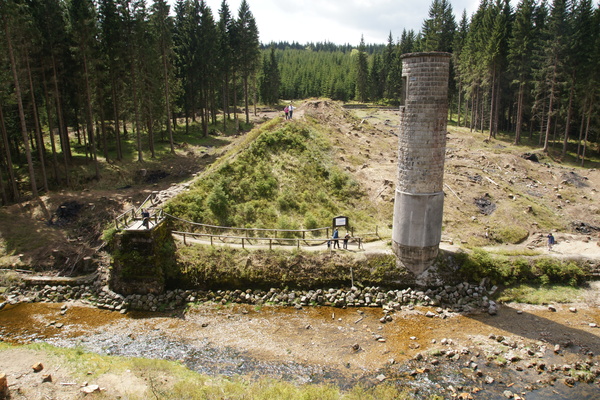
The dam collapsed less than year after being built, in 1916. The forest workers spotted a tiny leak, and informed the dam keeper, who in turn informed his supervisor, and was given a permission to open the slide valves. In spite of this, the dam collapsed in about 70 minutes. The resulting flood wave killed 62 people. In the picture, there is the dam body from the side, together with the valve tower, and the river Desná flowing to the left through the gap in the dam.
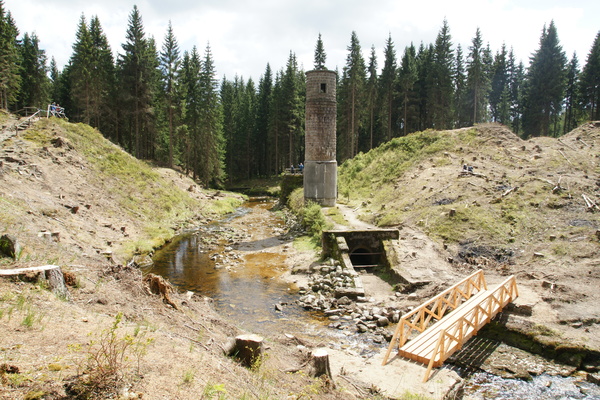
The view down the river shows the huge gap where the part of the dam collapsed. Behind the new wooden bridge the entry to the water outlet tunnel can be seen.
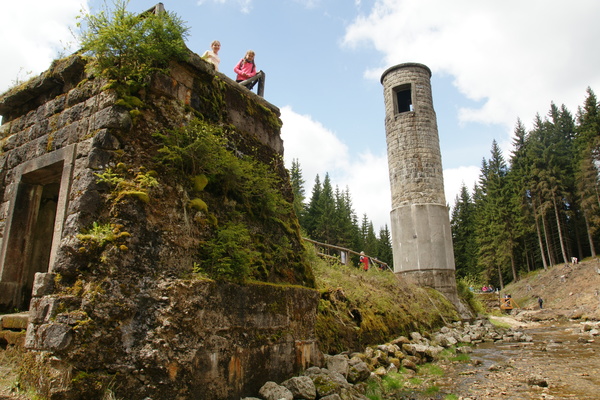
The outlet chamber and the valve tower. There were two slide valves in the dam: one in the tower, and the second one in the outlet chamber. When the dam started to leak, the first valve was fully open, while the second one was half-open.
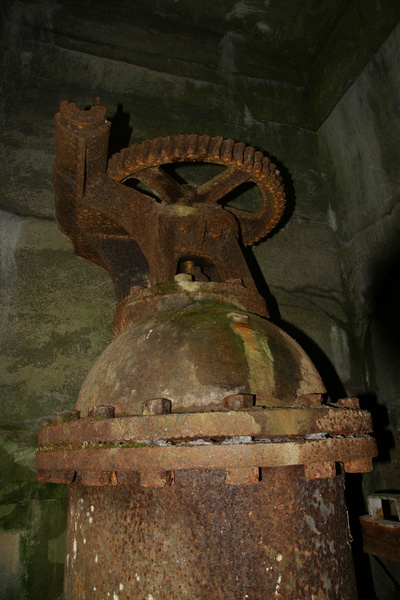
The second slide valve. After being informed about the leak, the dam keeper tried to fully open also the second valve, but he was forced to flee from the valve chamber in order to save his life. The valve has remained open at about 75 %.
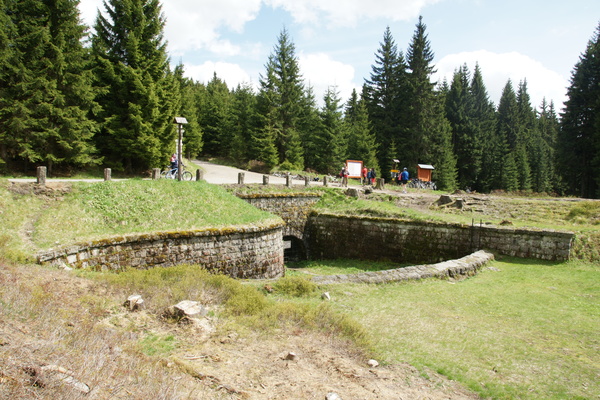
In times of torrential rains, it was possible to divert part of the incoming water to the neighbouring dam Souš by a tunnel more than one kilometer long. Nowadays, the tunnel is closed, as it is a nature reserve of bat wintering.
Here is a modern analysis of the catastrophe and the reasons of the failure of the dam (in Czech, sorry).
An interesting fact about the political and economical system of that time: this dam and several others in Jizerské hory were built by a non-profit organization (Vodní družstvo, in English something like Water co-operative), formed by local works owners and other local persons and organizations, which were endangered by annual floods from the mountain rivers. The local people paid for the whole system of dams. I wonder why we pay enormous taxes and then build anti-flood infrastructure using the money from Brussels. I would guess the percentage of money lost in this process is huge compared to what our forefathers did.